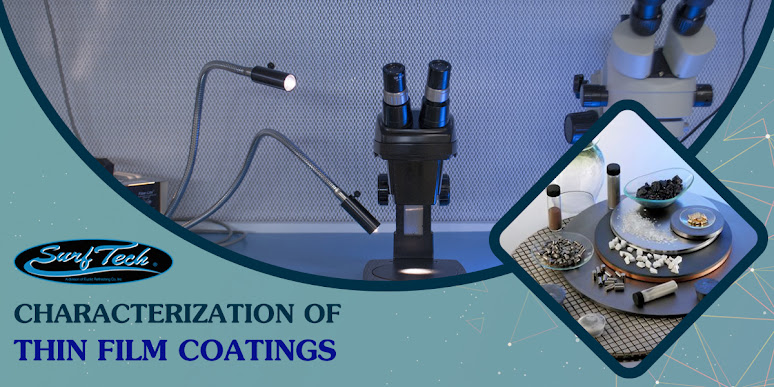Characterizations of Thin Film Coating
Among the most important characteristics of a thin film coating are the thickness, thermal conductivity, surface roughness, and adhesion. All of these characteristics are important for the coating to function properly, especially in electronic applications. If the coating is prone to failure, it can pose a serious threat to the operation of the device.
Thickness
Increasing the thickness of a thin film coating can improve a number of properties, including durability, reflectance, and transmittance. The thickness of a thin film coating can also be influenced by the materials it is made of. The thickness of a thin film coating can vary from microns to several micrometers. It can be used in a variety of applications, such as in optics, energy storage, and electronics.
Thin film coatings are often used in decorative coatings, such as on glass. They can also be used to produce a specific level of reflectivity on a lens. They are also used to create metallization layers on semiconductor wafers. These layers can be applied to a variety of applications, including electronics, optics, and solar panels. Thin film coatings can be made of many different materials. These include metals, semiconductors, and insulators. They can also be deposited onto previously deposited layers. They are durable, scratch resistant, and can be transparent.
Thermal Conductivity
Various methods of measuring thermal conductivity have been developed for thin films. Thermal conductivity is a measure of the thermal resistance of a film on a substrate. It is used in many applications and is also called thermal contact resistance. However, it is still difficult to measure thermal conductivity quantitatively. Thermal conductivity of thin film coating materials is generally lower than the thermal conductivity of the bulk material. However, in high-power laser applications, thin films are subject to thermal loads. It is thus important to measure the thermal conductivity of thin film coating materials to prevent damage.
Also read our blog for, PVD Coating For Architectural Hardware
A thermal conductivity measurement technique is the ultra-fast transient hot strip technique. This technique extracts thermal conductivity from the time-dependent thermal impedance of samples. Dedicated sample preparation is necessary for this technique. The thermal conductivity of a-SiO2 thin films is relatively small. However, c-SiO2 film is more thermally active and has larger thermal conductivity. Its thermal conductivity adheres to the Debye model of thermal conductivity.
Surface Roughness
Various physical properties, including optical reflection, optical scattering, magnetic strength, and adhesion are affected by the roughness of thin film coatings. A better understanding of the role played by surface roughness in these processes is critical for the development of better film testing techniques. There are two main types of surface roughness measurement techniques: profilometry and atomic force microscopy (AFM). Generally, AFM is used to determine the surface roughness of a thin film. However, profilometry is not suitable for viscous samples.
AFM provides a higher resolution of surface roughness and enables the measurement of 3-D textures of minuscule areas. In addition, AFM can be done under atmospheric pressure or in tapping mode. This method can be used to measure the surface topography of films deposited on substrates with a roughness of 0.5 nm or more. AFM is a popular technique for nanoscale surface characterisation of membranes and thin films. In addition, it can be used to measure surface roughness of a variety of materials, including polymer films.
Adhesion
Various factors influence the adhesion of thin film coatings. These include the physical and mechanical properties of the coating, and the substrate’s cleanliness during processing. It is essential to maintain these properties throughout the entire process. Thin film coatings can be deposited using standard techniques. For instance, sputtering or plasma spraying are common methods. These methods are used to deposit coatings on substrates, such as metals, plastics, and glass. It is important to understand the different processes and their effect on adhesion.
In addition, a variety of additives may also affect the adhesion of coatings. These include binders, which provide a non-volatile film-forming component and promotes bonding to the substrate. They also affect the physical and mechanical properties of the coating, including adhesion strength, uniformity, and film thickness. For example, a thin TiO2 layer on a Ti-6Al-4V substrate has a major influence on adhesion. A strong adhesion will allow the coating to prevent damage to the substrate. However, a weak adhesion will weaken the film.
SurfTech Can Layer Up To Six times More Coatings Than Those Other Guys
SurfTech® was the first to introduce Nano scale Multi Layer thin film coatings in 1995 for commercial use. The difference is we build multi Layer thin-film coatings. We build a “sandwich“ in which we control the thickness of each layer for increased: Lubricity, Hardness, Ability to dissipate heat, and Abrasion resistance, depending on the application. Contact us via +1-440-275-3356.
Reference Url, https://bit.ly/3iyT9iW




Comments
Post a Comment